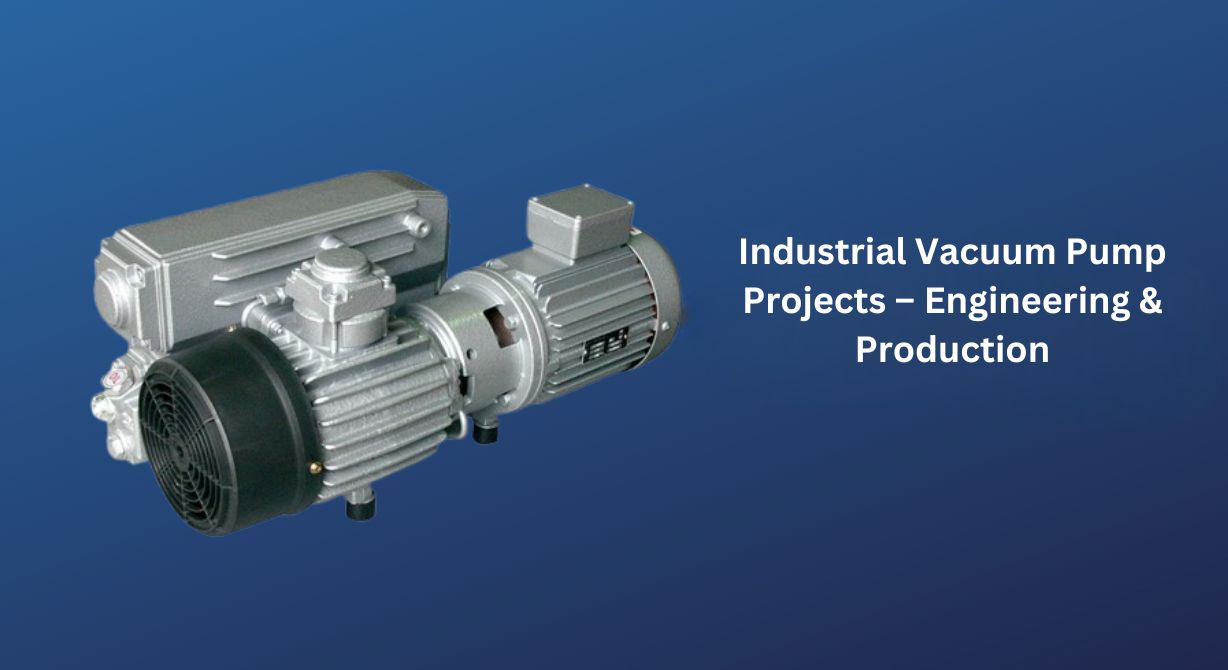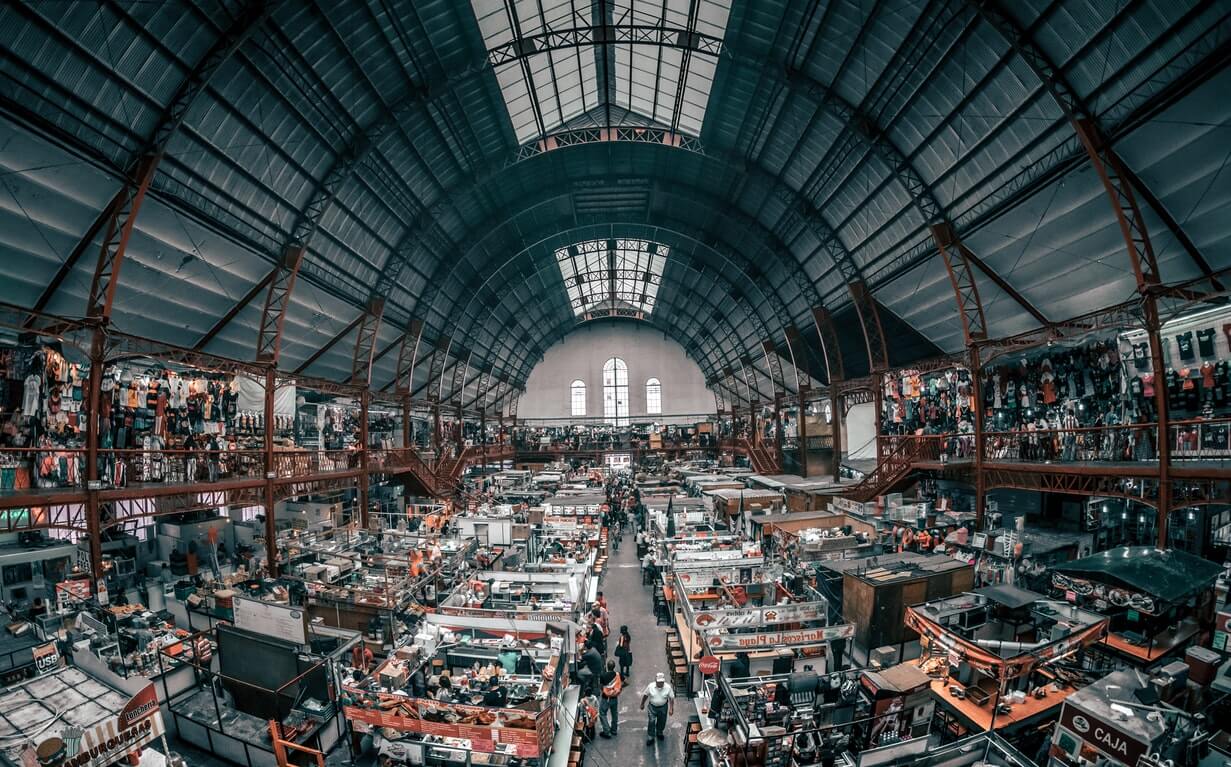Industrial Vacuum Pump Projects – Engineering & Production
Table of Contents
- What Are the Most Common Challenges in Industrial Vacuum Pump Projects?
- How to Avoid Engineering Errors in Vacuum Pump Design?
- Which Vacuum Pump Technology Is Most Suitable for Your Project?
- Considerations in Vacuum Pump Selection and Manufacturing Process
- Problems Encountered in Industrial Vacuum Pump Projects and Their Solutions
- Ways to Prevent Quality Problems in Vacuum Pump Manufacturing
What Are the Most Common Challenges in Industrial Vacuum Pump Projects?
Challenges faced in industrial vacuum pump projects directly affect the success of projects both in engineering and manufacturing processes. First, making the correct vacuum pump selection is a major challenge. Since there are different types and capacities of vacuum pumps available in the market, determining the pump technology appropriate for the project requirements is a critical step. Wrong selection reduces energy efficiency and shortens equipment lifespan.
The second major challenge arises during the engineering design phase. During integration of the vacuum pump into the system, factors such as pressure balance, sealing, and material durability must be carefully calculated. Even a small mistake here can seriously impair system performance or lead to extra maintenance costs.
On the manufacturing side, quality and durable material selection and precise workmanship are required. Industrial vacuum pumps are often exposed to harsh operating conditions, so chemical and mechanical resistance of materials is prioritized. Also, ensuring standardization in mass production and optimizing manufacturing processes are frequently encountered issues.
Besides, project management and scheduling are very important. Delays in completing any stage on time in industrial projects increase overall costs and extend delivery times. Also, supply chain problems or lack of technical support are common obstacles.
Energy efficiency and environmental sustainability requirements are gaining more importance. In vacuum pump projects, integration of low energy consumption and eco-friendly manufacturing techniques causes engineers to face new challenges. These factors require special attention during both design and manufacturing stages.
How to Avoid Engineering Errors in Vacuum Pump Design?
Vacuum pump design errors during the process can negatively affect pump performance and durability. To avoid these errors, detailed design analyses must be performed first. Operating pressure and temperature values should be correctly determined, and based on these, material selection and sizing must be carefully done.
Another critical mistake is neglecting fluid dynamics calculations. Incorrect modeling of fluid movements inside the pump can cause efficiency loss and wear. Therefore, CAD software and simulation tools must definitely be used during the design phase. Also, inadequate planning of sealing systems is a common problem; this leads to vacuum leaks and performance decline.
Engineering errors related to manufacturing may stem from improper implementation of the design. Communication gaps between design and manufacturing processes cause tolerance errors and quality problems. Hence, design documentation must be clear and detailed, and coordination with manufacturing teams ensured.
Maintenance and operational ease should not be overlooked. Neglecting accessibility and modularity in design shortens usage life and increases costs. A good engineering approach considers both performance and long-term reliability.
Which Vacuum Pump Technology Is Most Suitable for Your Project?
Selecting vacuum pump technology appropriate for your project's needs is a critical step for balancing performance and cost. There are various types of vacuum pumps for different applications, each offering distinct advantages. For example, gear vacuum pumps are preferred for industrial applications requiring high flow rate and durability, while piston pumps stand out in precision applications needing higher vacuum levels.
Additionally, rotary vane pumps are popular in many general applications due to energy efficiency and low maintenance needs. However, factors such as chemical resistance and particle tolerance must be considered. For instance, in systems working with abrasive gases, dry-type vacuum pumps may be more suitable as oil-free operation reduces contamination risk.
While choosing, balancing criteria like pump capacity, energy consumption, maintenance ease, and cost is necessary. Also, the environmental conditions and vacuum levels your project operates under play a decisive role in selecting the most suitable pump technology. Thus, the engineering team must analyze application requirements in detail to make the correct choice.
In conclusion, vacuum pump technology selection is not only about technical features but also linked to project budget and long-term operating costs. A good technology choice prevents performance losses and ensures project sustainability.

Considerations in Vacuum Pump Selection and Manufacturing Process
Vacuum pump selection is a critical process directly affecting project success. First, pump capacity and vacuum level must be accurately determined. Wrong selection can cause both performance loss and unnecessary energy consumption. Also, operating conditions and environmental factors where the pump will run must be considered.
During manufacturing, material quality and workmanship standards take precedence. Vacuum pumps are often used in applications requiring high pressure tolerances and chemical resistance, so materials used must meet specifications. Precise manufacturing techniques ensure long-lasting and efficient pump operation.
Also, testing and quality control phases are inseparable parts of the manufacturing process. Every pump must be carefully tested for compliance and performance. Skipping this phase in vacuum pump projects can lead to serious failures and cost increases later.
During manufacturing, process optimization and supply chain management should be managed carefully. Delays in material procurement and errors in production planning extend delivery times and negatively impact customer satisfaction. A well-organized production line guarantees high quality and on-time delivery.
Problems Encountered in Industrial Vacuum Pump Projects and Their Solutions
The most common problems in industrial vacuum pump projects include pump performance drop and sealing issues. Performance losses usually arise from incorrect design or insufficient maintenance. This increases energy consumption and operating costs.
Sealing problems come from wear or incorrect assembly of gaskets and sealing components. The solution involves using quality materials and regular inspections and maintenance. Also, correct adjustment of tolerances during manufacturing prevents sealing problems.
Another common issue is high vibration and noise levels. This is caused by incorrect assembly or balance problems. Solutions require pump assembly by experts and regular balancing procedures.
Additionally, energy efficiency problems may increase due to old or incorrectly chosen vacuum pump technologies. These issues can be minimized by investing in modern technologies and establishing maintenance programs. In project management, time scheduling and supply chain management must be carefully addressed.
Ways to Prevent Quality Problems in Vacuum Pump Manufacturing
Preventing quality problems in vacuum pump manufacturing is vital for both product performance and customer satisfaction. First, strict standards must be followed in material selection. Poor quality or unsuitable materials can reduce pump durability and cause early failures.
During manufacturing, workmanship quality and assembly precision are critical factors. Without meticulous control and compliance with standards at every step, pump operational efficiency is adversely affected. Therefore, trained personnel and advanced manufacturing equipment are necessary.
Also, quality control and testing processes are integral parts of production. Each vacuum pump produced must undergo detailed tests for performance, sealing, and durability. Early detection of possible faults at this stage prevents costly recalls.
Supply chain management directly affects quality. Timely and correct material procurement reduces disruptions in manufacturing and maintains quality standards. Continuous improvement and feedback mechanisms in production are essential for long-term success.
Made in Turkey


